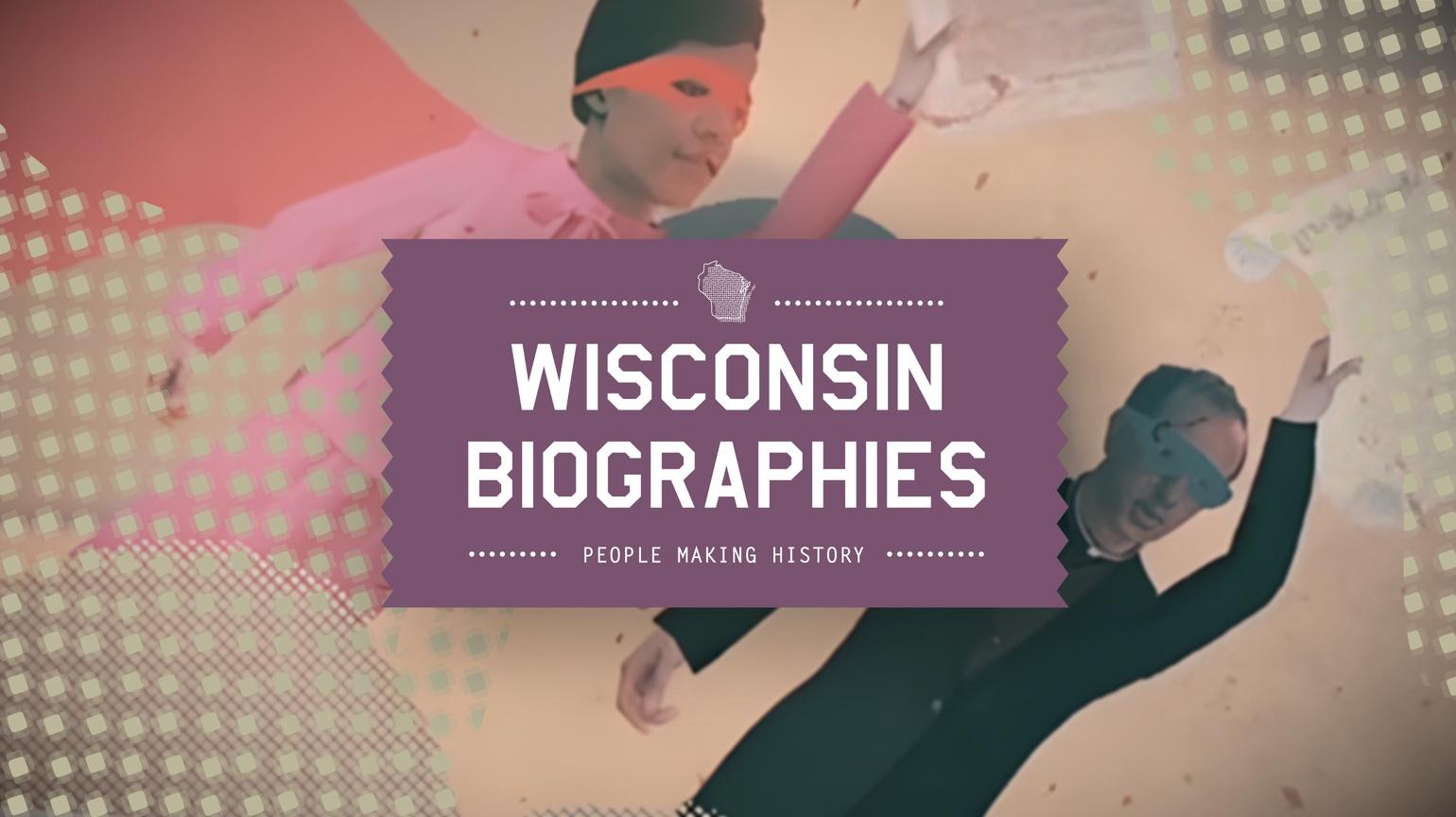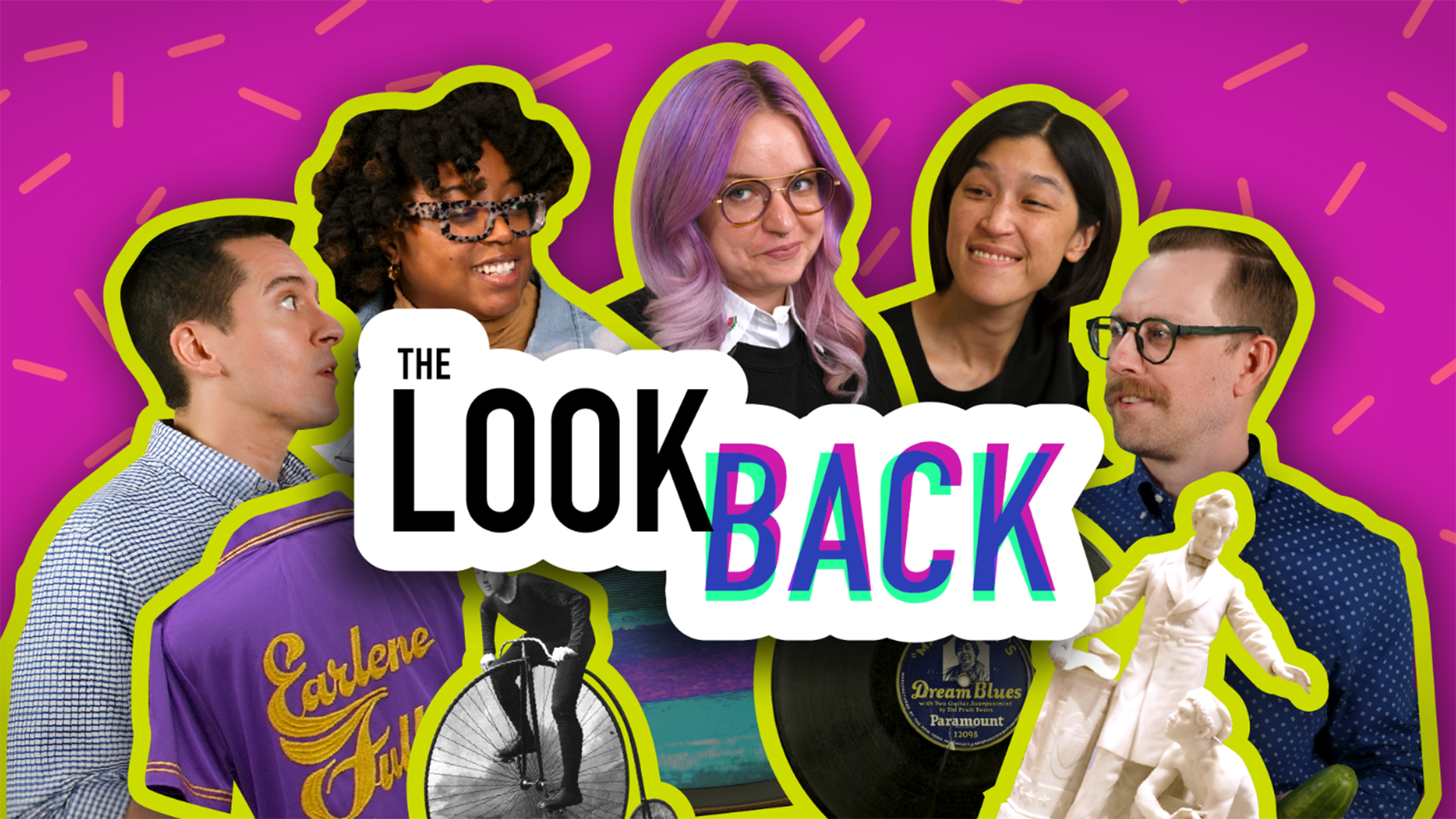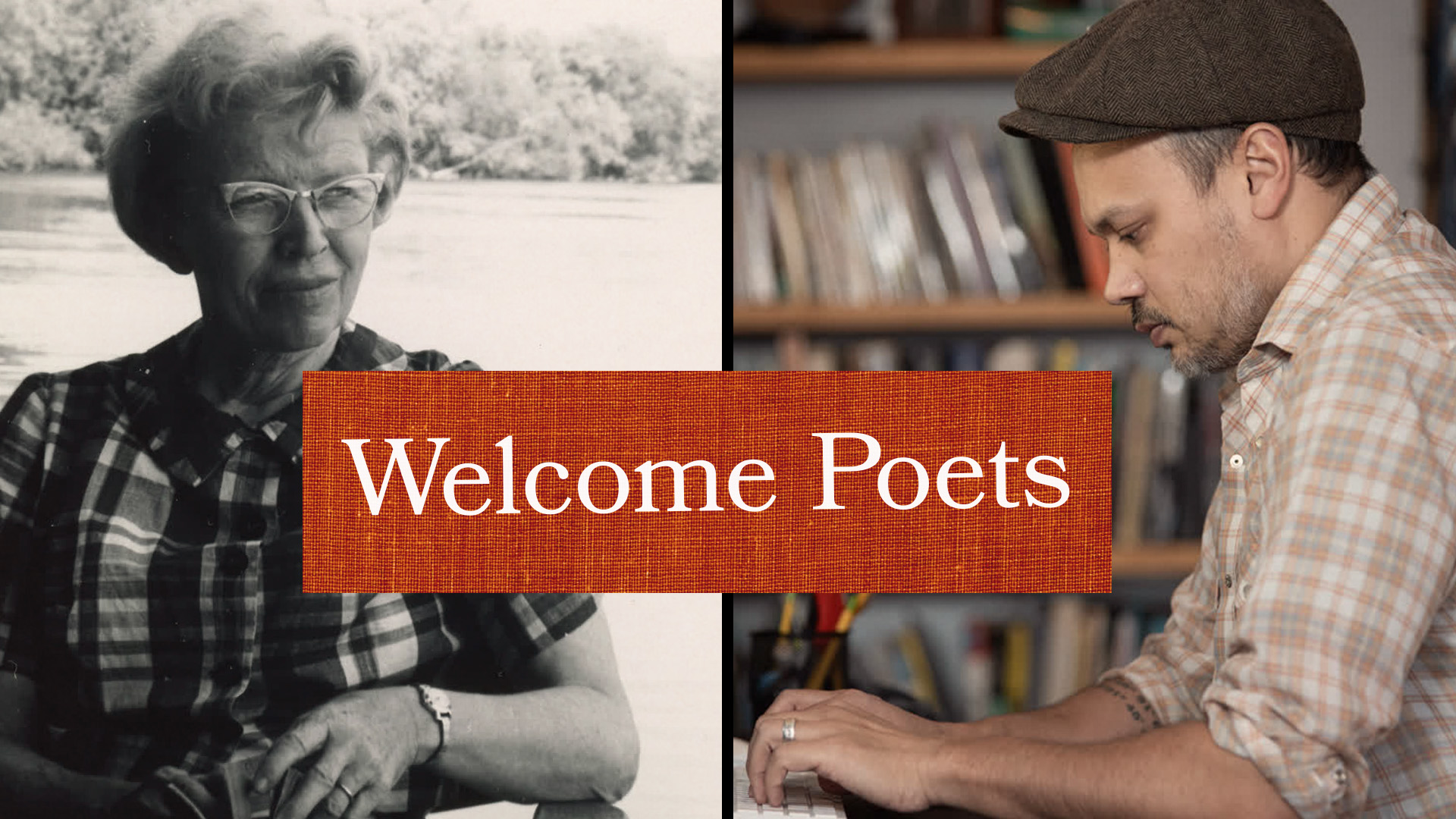Cat Phan: Whoa, Sergio! What’s with the piano?
Sergio Gonzlez: Yeah, I traded in the desk for this beautiful baby grand. What do you think?
Cat: You traded the desk?
Sergio: Oh, I’ve got a wonderful idea. You’re gonna love this one.
Cat: Questionable, but let’s hear it.
Sergio: Okay, do you know that hit musical Hamilton about America’s Founding Fathers in the Revolutionary War?
Cat: Yeah.
Sergio: Okay. Imagine Hamilton, but focused on Wisconsin.
Cat: A musical about Wisconsin and the American Revolution.
Sergio: Oh, if you thought Hamilton was a success, wait until we center Wisconsin history. We are gonna go interstellar.
Cat: Okay, let’s hear what you got.
Sergio: Okay, Cat. I have been working on this for about a month. I think you’re gonna like it. [opening piano notes] [rapping] ? 1776 is the year ? ? And the colonists have had it up to here ? ? With the British and their taxes and repressive tactics ? ? But in Wisconsin, the fact is, it’s not even a state yet ? ? Truth is, I’m starting to regret ? ? This singing exploration of the founding of our nation ? Oh, no. What have I done, Cat? Turns out Wisconsin wasn’t even a state during the American Revolution. What am I supposed to sing about?
Cat: Yeah, I think we have a little more learning to do before you write your next big hit musical. Let’s call Nick. I think he was around back then.
Sergio: Yeah, probably.
Nick Hoffman: Hey, Cat, how’s it going?
Cat: Hey, Nick. Sergio and I need to learn about any Wisconsin area connections with the American Revolution.
Nick: Oh, is this about Sergio’s musical again?
Cat: I see you’ve been dragged into this already.
Nick: Yeah, and that’s a tough question. But why don’t we meet up at the Wisconsin Historical Society? I think I know someone who can answer that question.
Cat: Sounds good. Come on, we’re going to the historical society.
Sergio: Okay, let’s do it.
[bright music]
Nick: John, can you tell us a little bit about the factors that led up to the American Revolution?
John W. Hall: The most famous ones that your average school student could cite are taxation without representation and this idea that parliament, at least, and later, the king had become a tyrannical force in American lives. There was a lot, lot more at hand. And one of the other major grievances is the sense, mounting through the 1760s and into the 1770s, that the king is going to deny the colonists their rightful birthright to all of North America to include those lands that are inhabited by American Indians. And so, in the wake of the Seven Years’ War or French and Indian War in North America, Britain tries to establish a new policy which is gonna keep the settlers hemmed in, more or less, to the east side of the Appalachian Mountains and preserve Native Americans in the possession of their own land.
Sergio: The Seven Years’ War was an international conflict that lasted from 1754 until 1763. The two primary forces were France and Great Britain, although many other nations and peoples were involved. In North America, the conflict started with disputes over land claims in the area of the Ohio River Valley. When the conflict ended in 1763 with the Treaty of Paris, France was forced to cede its lands in Canada, then New France, to the British. Now, although Great Britain expanded its holdings in North America, a number of factors related to the Seven Years’ War would ultimately lead to the American Revolution. This included American colonists’ desire to take lands that were supposed to be held by Indian nations, and the new taxes that were imposed on colonists as a way to pay off Britain’s national debt.
Sergio: You’re kind of laying out, I think, one of the misconceptions people have, which is the American Revolution is between American colonists and the British crown, but there are a lot more players kind of in the mix here.
John: Essentially, every Native nation east of the Mississippi River was involved in this conflict in one degree or another.
Nick: Bringing it back to where we are in the western Great Lakes, what’s the status on the ground right as the American Revolution is about to begin?
John: Because France was wholly defeated in North America in that French and Indian or Seven Years’ War, the agents of the French crown, the soldiers, they’re all gone. And what that does is it leaves the Indigenous inhabitants of this region in need of a new, beneficent European partner. And it is now Britain that steps in and says, “We now are in that position to be your friends and allies and partners.” So here, in what we presently call Wisconsin, the vast majority of the tribes are aligned in sentiment and interest with Britain because Britain is in the position to fill those trading posts and the positions.
Sergio: So maybe we can talk a little bit about the archival sources we have here that can give us some insights into how they interacted.
John: We have a document here from 1778, during the American Revolution, in which Frederick Haldimand, the governor general of British Canada, is giving this Menominee chief not merely a certificate, but a certificate that accompanies a medal.
Cat: Starting in the 1600s and continuing through the 1800s, presentation medals were given to American Indians by Spanish, French, British, and American government officials, missionaries, and traders. Europeans gave medals as a way of securing an alliance, to commemorate a treaty signing, to honor Native visitors to a city, or as a reward for service. Many of these medals were highly regarded by their Native recipients. Some Native individuals chose to be buried with their medals, some handed them down to descendants, and some chose to wear them in portrait images.
Sergio: Sir Frederick Haldimand, a British Army officer and colonial official, gave this medal to a Menominee chief on August 17, 1778. The chief’s name was Chawanon. Haldimand presented the medal at a general council in Montreal with representatives of the Sioux, Sauk, Fox, Menominee, Winnebago, Ottawa, Potawatomi, and Chippewa. The medal is made of two silver discs that have been bound with a silver rim. One side features a portrait of King George III. The text on this side reads “George III by the Grace of God” in Latin, which is part of his royal title. The reverse side features the royal crest with a text of the royal motto, again in Latin, “God and My Right.”
Cat: To learn more about Chief Chawanon and the medal, Sergio and I spoke with the Menominee Tribal Historic Preservation Officer, David Grignon.
David Grignon: Chief Chawanon is, actually, his name is Tsheka Tshake Mau. He was also known as the Old King. And he was from the Bear Clan. He was the one that greeted the British coming in to the Bay area to do the fur trade. Chawanon and others in the Bay area, they always told the British or the French that “If you build this fort, it’s still gonna be on Menominee land.” And he stressed that to them.
Sergio: Now, this style of medal first appears in the Americas in the summer of 1776. These medals were likely intended as a way of gaining the favor of Native nations and keeping them as allies in the war against American colonists. John, it sounds like from everything you’re telling us, we often have this idea that the American Revolution is about freedom and liberty, and it certainly is about that, but a lot more complicated. It’s about land, it’s about territory, it’s about who gets to decide how rules are being made.
John: I mean, these are the two sides of the same coin, right? And I would argue that much of ensuing American history is kind of a struggle of the United States to live up to ideals that are embodied in the Declaration of Independence. But the flip side of it is that they do feel that the British crown is impinging upon their rights to treat continental North America as something of a birthright.
Sergio: Whoa, Cat, what a conversation!
Cat: The American Revolution involves so much more than just colonists, the British, and the East Coast.
Sergio: Yeah, it was definitely a multinational conflict.
Cat: So, are you ready to write your next big hit musical?
Sergio: Broadway, here we come! Taxation without representation? That’s not the full story. Truth is, the young nation wanted more and more territory.
Cat: But Native peoples in the region had their own incentive. Their strategies were legion. Their approaches were inventive. More than just to survive, but for people to thrive.
Sergio: All this to regale the American Revolution is more than just the tale of British and colonial resolution. It’s multinational history and Wisconsin’s role is no longer a mystery.
Cat: But now it’s your turn. What would you like to learn? Ask a friend or a teacher to come along and get together to write your own history song.
[hip-hop music] [both laughing]
Producer: You got it!
Sergio: Yeah? All right. That does it for Wisconsin in the American Revolution. Next, Wisconsin goes to space! [high piano note] [all laughing]
Search Episodes

Donate to sign up. Activate and sign in to Passport. It's that easy to help PBS Wisconsin serve your community through media that educates, inspires, and entertains.
Make your membership gift today
Only for new users: Activate Passport using your code or email address
Already a member?
Look up my account
Need some help? Go to FAQ or visit PBS Passport Help
Need help accessing PBS Wisconsin anywhere?

Online Access | Platform & Device Access | Cable or Satellite Access | Over-The-Air Access
Visit Access Guide
Need help accessing PBS Wisconsin anywhere?

Visit Our
Live TV Access Guide
Online AccessPlatform & Device Access
Cable or Satellite Access
Over-The-Air Access
Visit Access Guide
 Passport
Passport






Follow Us